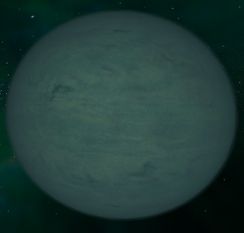Difference between revisions of "Planet Saipan"
From Discovery Wiki
Jump to navigationJump to search (added planet saipan) |
m (Historical flag added. Infocard links and category added) |
||
| (2 intermediate revisions by 2 users not shown) | |||
| Line 1: | Line 1: | ||
| + | {{Historical | Removed with system [[Omicron Zeta]] in 4.90 or earlier}} | ||
{{Planet Infobox | {{Planet Infobox | ||
| − | | name = Saipan | + | | name = Planet Saipan |
| − | | image = Saipan.jpg | + | | image = Planet Saipan.jpg |
| owner = | | owner = | ||
| system = [[Omicron Zeta]] | | system = [[Omicron Zeta]] | ||
| Line 16: | Line 17: | ||
Saipan is a gas giant located on the edge of the Yap Nebula. Zoner explorers named the planet after the largest island of the Northern Mariana Islands of ancient Earth. The planet's blue atmosphere is mainly comprised of methane, helium and argon. | Saipan is a gas giant located on the edge of the Yap Nebula. Zoner explorers named the planet after the largest island of the Northern Mariana Islands of ancient Earth. The planet's blue atmosphere is mainly comprised of methane, helium and argon. | ||
| − | + | ||
| + | [[Category: Edge Worlds]] | ||
| + | [[Category: Removed Planets]] | ||
Latest revision as of 19:08, 22 February 2019
Error creating thumbnail: Unable to save thumbnail to destination
|
This page has been retired but kept for historical or other reasons, The information on this page may be incorrect, out of date or just not relevant to this version of Discovery. It should not be taken as canon nor any authority on the current version of Discovery. It is kept simply to show some history of the Discovery Mod:
See also:
|
| Planet Saipan | |
| Location | 4B, Omicron Zeta |
| Technical information | |
| Docking | No |
| Terrain | N/A |
| Diameter | 15,175 km |
| Mass | 6.98 x 10e24 kg |
| Temperature | N/A |
| Escape velocity | 8.65 km/sec |
Saipan is a gas giant located on the edge of the Yap Nebula. Zoner explorers named the planet after the largest island of the Northern Mariana Islands of ancient Earth. The planet's blue atmosphere is mainly comprised of methane, helium and argon.
